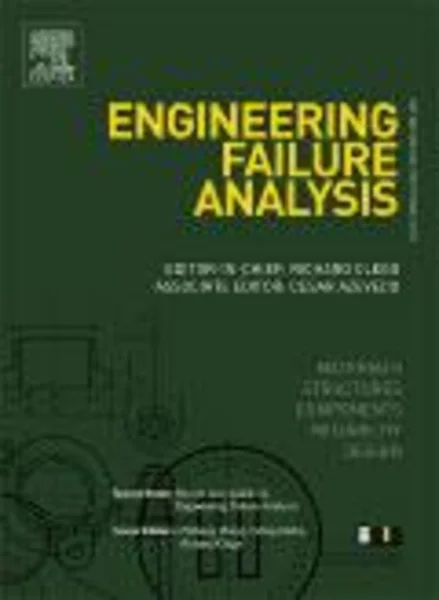-
failure of steel pipes for hot air supply
جزئیات بیشتر مقاله- تاریخ ارائه: 1390/01/01
- تاریخ انتشار در تی پی بین: 1390/01/01
- تعداد بازدید: 496
- تعداد پرسش و پاسخ ها: 0
- شماره تماس دبیرخانه رویداد: -
different materials can be used in high temperature applications: any low-alloyed cr–mo steels, 9–12% chromium ferritic steels, heat-resistant austenitic stainless steels, and nickel-base alloys. heat-resistant austenitic stainless steels have better strength and oxidation resistance at high temperatures than low-alloyed steels and are less expensive than ni-base alloys. also, they have a service life of several (sometimes over ten) years. it is generally accepted that ferritic and austenitic steels can be useful at temperatures of up to 625 and 675 c, respectively, purely from the creep strength point of view at steam pressure of 35 mpa. however, it is well known that heat-resistant steels have a tendency to form different phases, including carbides and intermetallic phases. carbide precipitates at grain boundaries provide preferential sites for cavity nucleation owing to the stress concentration produced during the fatigue cycle. the hard and brittle sigma phase, which can result in harmful influence on the properties of the alloy, can often arise. thus, the distribution and morphology of precipitates and the change in the chemical composition of the austenite are considered important factors in determining the mechanical and corrosion properties of steels. the precipitation of carbides and sigma phase promotes sensitisation of steel, i.e. it increases the susceptibility of steel to intergranular corrosion. the highly alloyed austenitic stainless steels with high silicon content are commonly considered excellent heat-resistance materials. higher silicon contents (between 1 and 3 wt.%) can improve high temperature resistance to oxidation or scaling. silicon has a beneficial effect on high temperature corrosion of aisi 310 steel due to two reasons. firstly, silicon forms vitreous silica at the interface between the metal and the scale. this silica layer has a much lower density of defects, thus being a good diffusion barrier for ions (cations and anions) produced through ionisation reactions taking place at the metal/scale and scale/gas interfaces. secondly, the preferentially formed silica acts as a nucleation site for the subsequent formation of chromia, which renders oxidation protection. in this work, the failure of steel pipes made from heat-resistant stainless steel with 2.27 wt.% of si is presented.
مقالات جدیدترین رویدادها
-
استفاده از تحلیل اهمیت-عملکرد در ارائه الگوی مدیریت خلاقیت سازمانی و ارائه راهکار جهت بهبود
-
بررسی تاثیر ارزش وجوه نقد مازاد بر ساختار سرمایه شرکت های پذیرفته شده در بورس اوراق بهادار تهران
-
بررسی تأثیر سطح افشای ریسک بر قرارداد بدهی شرکت های پذیرفته شده در بورس اوراق بهادار تهران
-
بررسی تأثیر رتبه بندی اعتباری مبتنی بر مدل امتیاز بازار نوظهور بر نقد شوندگی سهام با تأکید بر خصوصی سازی شرکت ها
-
تأثیر آمیخته بازاریابی پوشاک ایرانی بر تصویر ذهنی مشتری پوشاک ایرانی (هاکوپیان)
-
شناخت مفهوم گردشگری الکترونیک و تفاوت شناخت حاصل از گردشگری واقعی و گردشگری مجازی
-
بررسی پارامترهای موثر در نفوذ کامل پرتابه در اهداف بتنی
-
نتایج کوتاه مدت جراحی آرتروسکوپی دررفتگی مکرر جلویی شانه
-
مقایسه روشهای تراکم ژیراتوری و مارشال جهت تهیه نمونه های آزمایشگاهی برای بررسی رفتار مکانیکی آسفالت به عنوان هسته آسفالتی
-
مدل سازی موتور استنتاج فازی ممدانی با استفاده از شبکه های پتری رنگی سلسه مراتبی
مقالات جدیدترین ژورنال ها
-
مدیریت و بررسی افسردگی دانش آموزان دختر مقطع متوسطه دوم در دروان کرونا در شهرستان دزفول
-
مدیریت و بررسی خرد سیاسی در اندیشه ی فردوسی در ادب ایران
-
واکاوی و مدیریت توصیفی قلمدان(جاکلیدی)ضریح در موزه آستان قدس رضوی
-
بررسی تاثیر خلاقیت، دانش و انگیزه کارکنان بر پیشنهادات نوآورانه کارکنان ( مورد مطالعه: هتل های 3 و 4 ستاره استان کرمان)
-
بررسی تاثیر کیفیت سیستم های اطلاعاتی بر تصمیم گیری موفق در شرکتهای تولیدی استان اصفهان (مورد مطالعه: مدیران شرکتهای تولیدی استان اصفهان)
-
بررسی تاثیر هوش تجاری بر رفتار مصرف کنندگان محصولات فرهنگی-رسانه ای
-
بررسی قابلیت استفاده از نسبت دوپونت به منظور پیش بینی سودآوری و ﺑﺎﺯﺩﻩ سهام (مطالعه موردی: صنعت دارویی بورس تهران)
-
بررسی روش های کنترل فرسایش بادی خاک و نقش آن در کاهش انتشار ریز گردها در مناطق خشک و نیمه خشک
-
تبیین طبایع چهارگانه در احادیث طبی اهل بیت (ع) و مقایسه ی آن با طب اخلاطی
-
experience of using magnesium sulfate infusion in the operating room to induce analgesia after laparoscopic cholecystectomy




سوال خود را در مورد این مقاله مطرح نمایید :